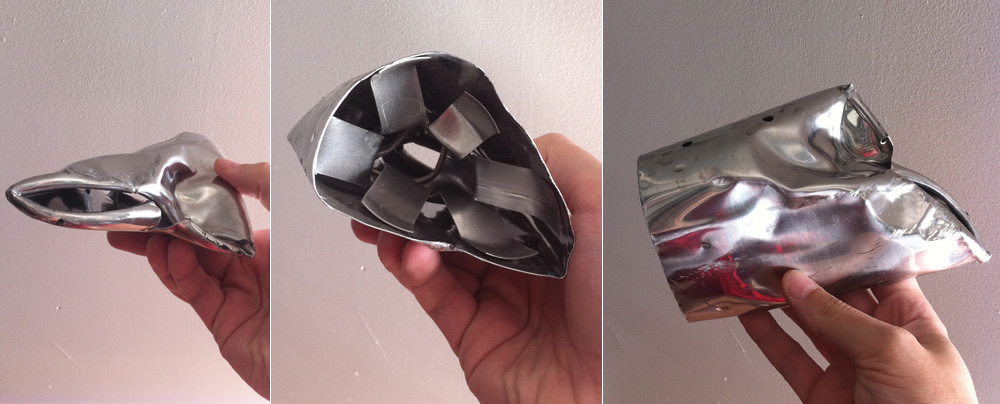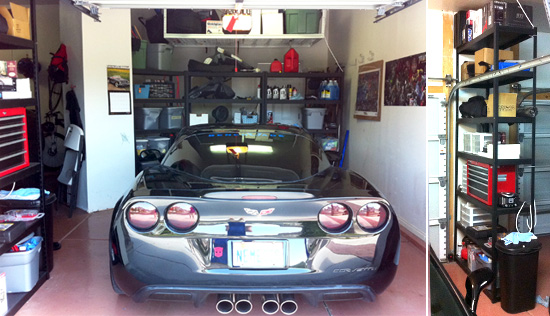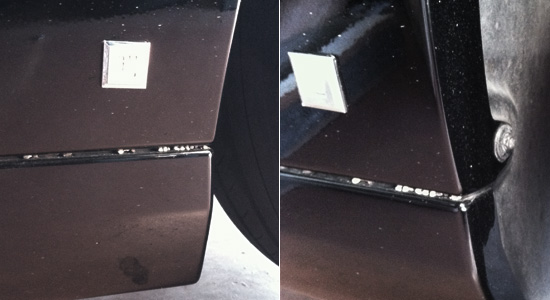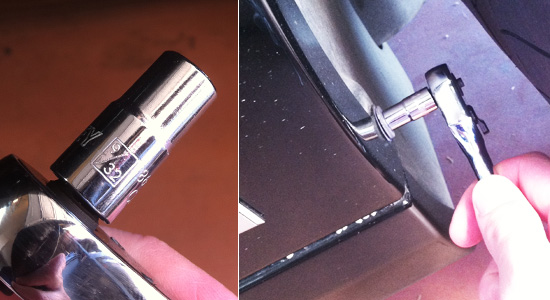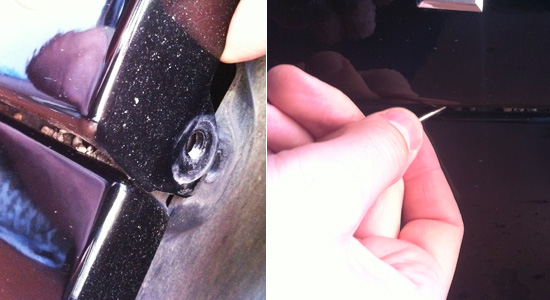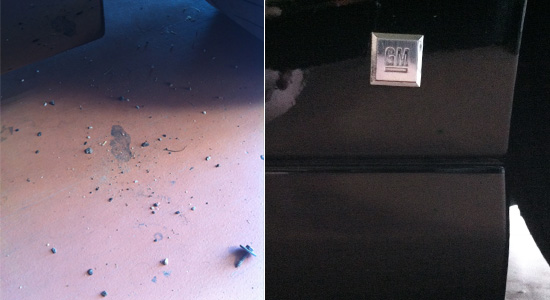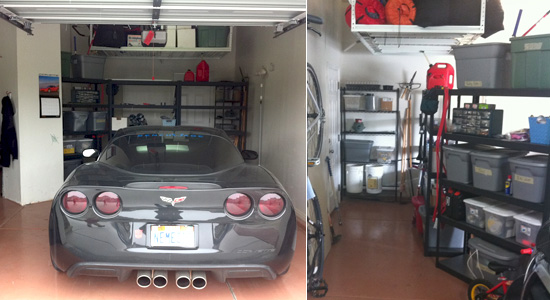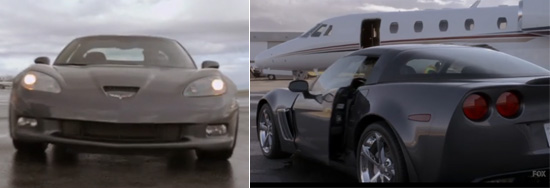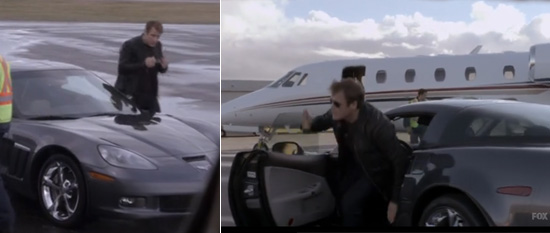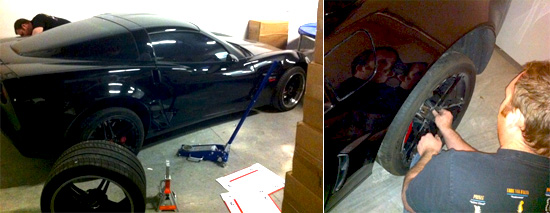When it comes to my car I don’t like to take any chances. I do as much of the maintenance as I can myself. So, naturally, I change my own oil. This time I decided to put together a little “how to” guide. If you’re not comfortable working on cars then I suggest you take your vehicle to a competent service center. These instructions are only applicable to C6 model Corvettes (specifically the Z06). Any work you choose do to on your car is done at your own risk. So, let’s get started!
There are a few things you’re going to need. 1) An oil reservoir for used oil (at lest 10 quarts). You can get these pretty much anywhere that sells car care items for around $10. I’ll tell you what to do with your used oil later on. 2) A funnel. I recommend a 2 quart funnel for your oil. These are about $1.
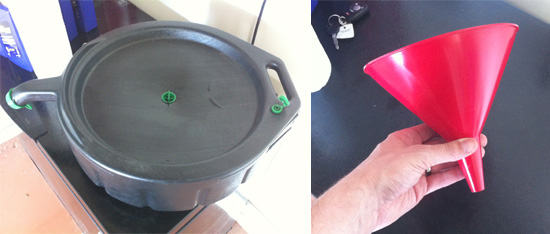
3) 8 quarts of 5W-30 oil (I use Royal Purple). I feel like I need full synthetic w/ my engine modifications but any oil that meets GM’s guidelines can be used. 8 quarts is for the Z06; If you have a coupe refer to your service manual. 4) New oil filter. I just switched to the Bosch 3334 this time so I could use a different kind of filter wrench (more on that in a sec). Anyone competent at a place like AutoZone can help you determine which oil filter you need if you pick a brand other than Bosch.
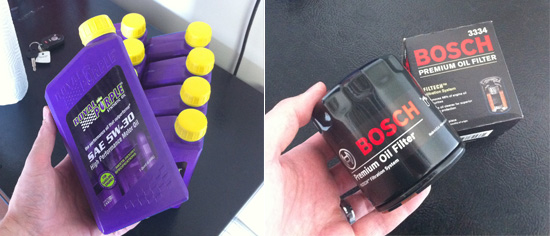
5) Socket wrench with 13mm head. This will be used to loosen the oil drain plugs. 6) Oil filter wrench. The band wrenches are good, but space around the oil filter can be limited (like on a C6) so I switched over the Bosch filter because I can use the attatchment below on a socket wrench and it’s much easier.
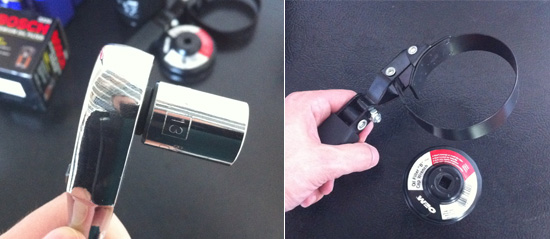
Here are two examples of how the wrenches fit over oil filters.:
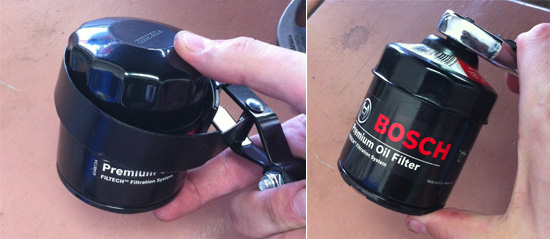
7) Rags & paper towel. No matter how careful you are oil is going to spill onto something. 8 ) Here are some optional items you might want to have handy: mallet or hammer & 1 quart ZipLock bag.
So to recap here’s what you need for your oil change:
1) Oil reservoir (at least 10 quarts)
2) Funnel (2 quarts)
3) 8 quarts of 5W-30 oil
4) New oil filter
5) Socket wrench with 13mm head
6) Oil filter wrench
7) Rags
8 ) Mallet or hammer, ZipLock 1 quart bag (both optional)
Please note: This guide doesn’t cover how to lift up your car (see my “How to Lift Your Car” guide coming soon). But you will have to lift your car or have a pit to change the oil on the C6.
Once your car is sufficiently high enough you need to locate the two drain plugs on the oil pan (there is actually a line with two arrow pointing at them). You’ll need to remove both of them, but you can do it one at a time. Also locate the oil filter (see I told you space was tight). The one shown here was my old Mobile1 filter.
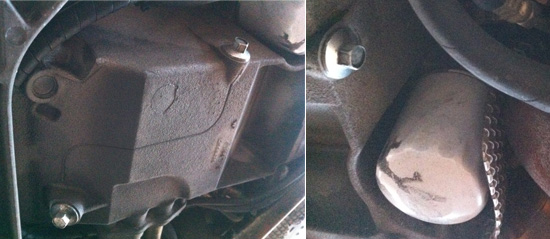
Position your oil reservoir below one of the plugs and loosen it. You may need to tap your socket wrench with the mallet or hammer to get it started. Remove the first plug and let the oil drain out. Remove the second plug and let it drain. Let the car drain until nothing comes out but small drops (usually takes about 10- 15 mins). I’m pretty sure most of the C6 Vettes have a magnet on the oil plug tips (it collects random debris floating around in the oil pan). Be sure to wipe off anything that’s been collected.
A quick lifting tip: I have two car jacks so I usually lift up the front end of my car when I start the oil change. But to make sure the car drains as much as possible I pull the jacks out of the front of my car and then move them to the back. Then I move the jacks back to the front. It sounds like a hassle, but it only takes a few extra minutes.
When the oil is all drained put the oil plugs back. The service manual recommends 18lbs of torque but I just tighten them snugly and I’ve never had an issue.
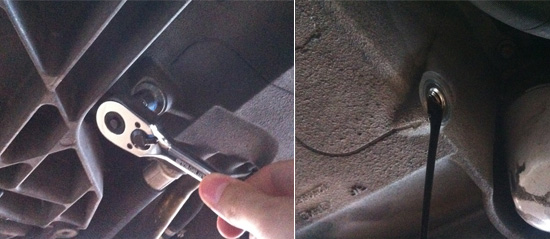
Next is the removal of the oil filter. Position your oil reservoir underneath (because more oil will be coming out). Using your oil filter wrench loosen the filter a bit and then let the oil drain for a moment. Then you can use the ZipLock bag and put it over the filter and unscrew it the rest of the way (yes, it unscrews forever). Next you put on your new oil filter (some people fill it with oil, but this is optional). Be sure to rub a little bit of oil around the seal on the top of the filter. Screw it in by hand and then give it a quarter turn with your wrench. Be sure not to over tighten the filter.
That’s it for underneath. Wipe up any oil around the drain plugs, the oil filter and your used oil reservoir. Make sure everything is out from beneath your car and lower it to the ground.
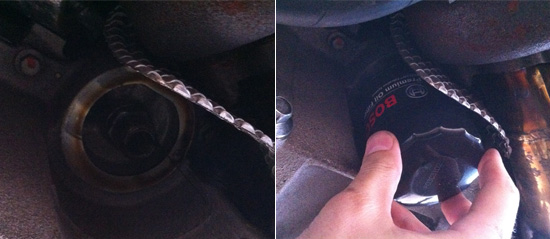
Pop your hood and locate the oil cap (it will say “Mobile 1”). The location varies between the coupes and the Z06. Make sure you’re putting the oil in the right place! Put in your funnel and dump in your oil (some people don’t add all the oil at this point, but I do- in fact I add a little extra since I have oil lines running to my turbos). Remember to put your oil cap back on!
Wait a few minutes and then start your car and let it idle for a few minutes. Keep an eye on your oil pressure gauge and look under the car for leaks. Turn off your car and check your oil dipstick to make sure your oil level is okay.
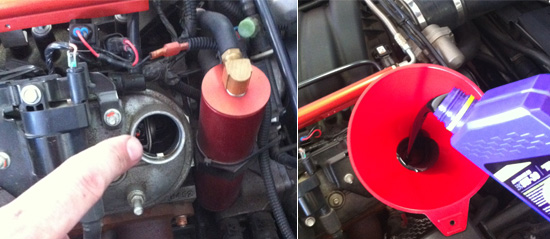
The next step it to reset the oil life indicator. Turn on your car and press the “Trip” button until you reach the “Oil Life Remaining” display.
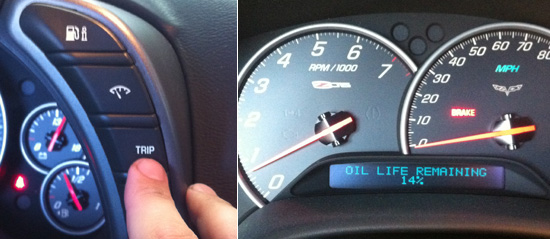
Then just hold the “Reset” button until the display shows “99%” oil life remaining. Some people will always change their oil after 3000 miles, but I wait until I have less than 20% oil life remaining. For the most part I feel like you can trust the oil life gauge.
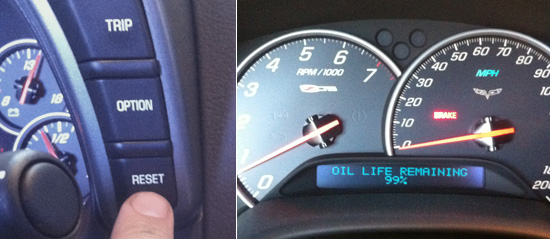
You can take your old oil to any AutoZone and they have a disposal unit you can use for free. Make sure to dispose of your other trash in accordance with your local laws. Clean up your work area, put away your tools and thump your chest.
You’re done! Let the smug satisfaction (stemming from the fact that you did it better than they would have done it) wash over you. Go for an “I’m the man” drive (check for oil leaks again when you get back). Taking good care of your car is an important part of Corvette ownership and there’s nothing better than doing it yourself.
Posted by Cam, August 28, 2011

